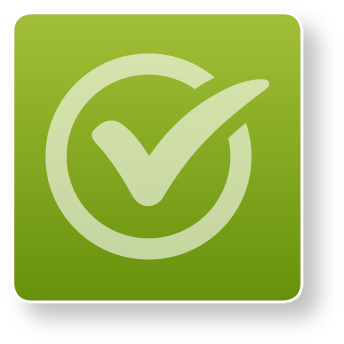5. According to figures from the 2017 Britain’s Healthiest Workplace Survey, sickness-related absence and presenteeism costs the UK economy £77.5bn per year. Completing Return to Work Conversations and recording these on MyHR will enable us to capture and monitor trends in absences helping us to develop a proactive approach to reducing absence in the workplace and increasing our productivity. Most importantly, this data will help us focus on and maintain our wellbeing so we can all be at our best. The number of Return to Work Conversations recorded against absences will continue to be monitored monthly via the Group SHE dashboard. Over each quarter, a 20% reduction in the gap between these two measurements will be targeted until the of the year where this gap should be no more than 20%. Support for line managers and enhancements to the MyHR system will continue to enable this ongoing improvement. The system is as follows:
• Complete the above Return to Work conversation with your direct report within 2 days of their return
• Conversations must be private and can be carried out face-to-face or online
• Welcome your direct report back to work and encourage a two-way discussion
• Check the individual is fit to return to work
• Discuss reasons for absence to identify any ongoing issues
• If issues are raised, discuss solutions including if appropriate signposting to Occupational Health, EAP Scheme or other service providers
• Log the Return to Work Conversation on the MyHR system
Further guidance on managing unplanned absence can be found within the Line Managers Toolkit and also by following this link: HRS-H-038 How to manage unplanned absence.
6. Low energy is a work hazard that can affect the well-being and safety of our people. As was the case in the use of our previous Fatigue Management Plans, Personal Energy Management Plans (PEMPs) must be completed for all contracts and departments (including those working within permanent offices), using the Costain Personal Energy Management ‘Charter’ (SHE-T-473) for reference.
This helps us all to assess, determine and manage personal energy levels, the benefits of which include:
- Improved the long-term health and well-being of our people including a strengthening of work-life balance and morale,
- Reduced fatigue-related incidents/ accidents,
- Reduced unplanned absence.
As we continue to experience the COVID pandemic, and in support of Personal Energy Management Plans, all contracts and departments must have an overarching ‘Thrive Plan’ in place that outlines what will be done to retain team connectivity, motivation and wellbeing which incorporates energy management. The SHE Assurance Team (assisted by other members of the SHE Team as appropriate) will review Energy Management Plans, the use of the Charter and the overarching Thrive Plans during the year, and feedback will be provided through Sector and up to Divisional Level. The Contract Leader, Department Head (or equivalent) and Line Manager requirements are as follows:
- Ensure that a documented Thrive Plan is in place. Depending on the need, this may be a specific plan, or a simpler approach using the feedback and suggestions submitted for the 16th Leadership Impact Day held in October 2020, included within the Personal Energy Management Plan.
- Complete the Personal Energy Management Plan (SHE-T-440 Personal Energy Management Plan) having reviewed SHE-T-473 Personal Energy Management Charter, which should also be discussed between employees and their line managers in scheduled 1:2:1s.
Review your project/ contract PEMP quarterly and revise accordingly based on any environmental or project changes and the conversations with your direct reports and teams. Further guidance on PEMPs can be found here: SHE-H-461 How to manage personal energy - Record conversations, issues and opportunities raised and what solutions you have explored with your direct reports.
7. The benefits of Costain approach to Behavioural Management have been consistent and highly impactful since its development some 15 years ago. Given the resulting improvement in performance and culture since, it is now prudent to extend the principles behind CBM beyond the focus on SHE and into other central or support functions, disciplines and/or departments. During Qtr. 1, the Costain Behavioural Management Team will consult beyond scheme/contractual delivery at site level to identify other areas in the business where the Applied Behavioural Science approach will bring benefits. Once these additional communities have been identified, a targeted training delivery plan will be developed by the CBM Team in conjunction with MyLearning. Those engaged with will be monitored using the Group SHE Dashboard with implementation support sought by Sector Directors or their equivalents.
8. Developing a coaching culture that supports Supervisors and Front Line Managers with a sound behavioural framework wholly aligns with our Leading Edge Strategy; to be safer, faster, better, smarter and cost less as a result of our pioneering working practices and collaborative behaviours. Embedding coaching across the business will help us to improve individual and collective performance, creating a climate where people can openly give and receive positive and constructive feedback, and allow them to ‘stretch’ themselves so they can achieve optimum performance. Members of the Costain SHE Assurance & Behavioural Management Team will engage with those contracts they support and facilitate the development of a suitable coaching plan during the first half of the year. Coaching plan templates and supporting guidance is currently under development based on works already undertaken on HS2 EWC contract.
- Coaching Plans can be incorporated into a contract or team CBM/CBS Implementation Plans: CBS-H-003 How to Create an Implementation Plan
- A template Behavioural Improvement Plan can be found here: CBS-T-009 CBM Implementation Plan
